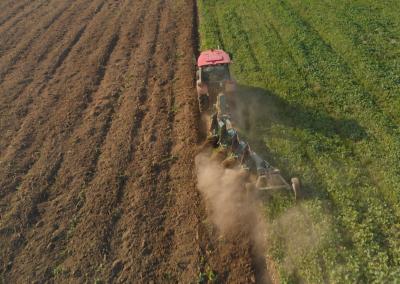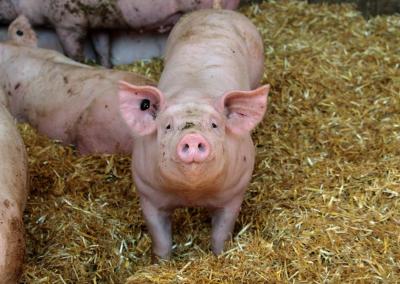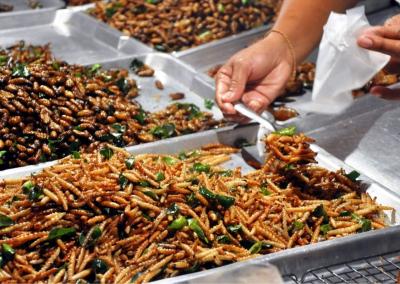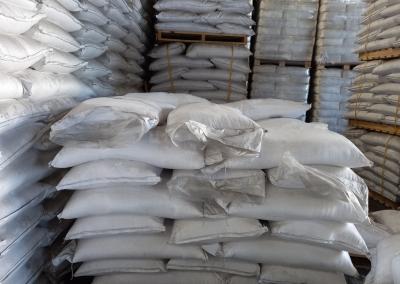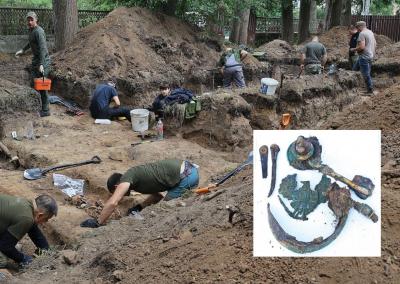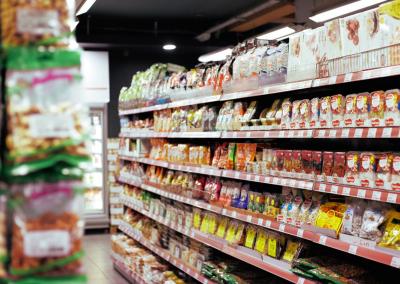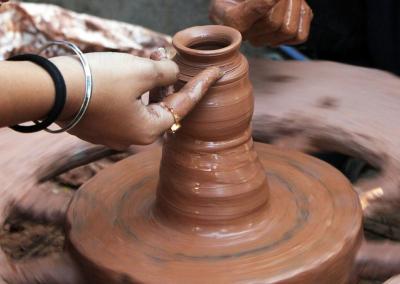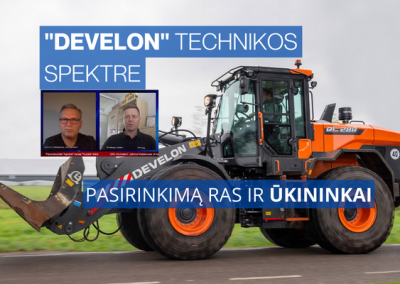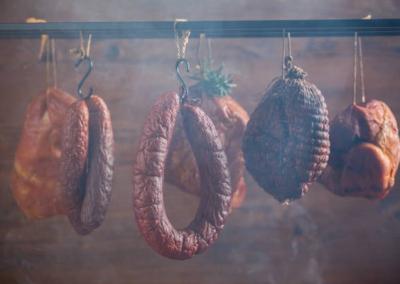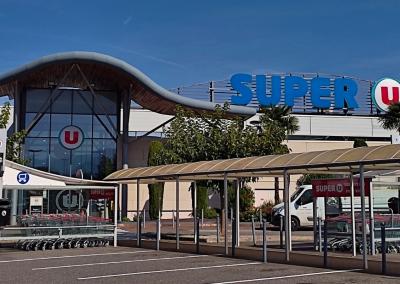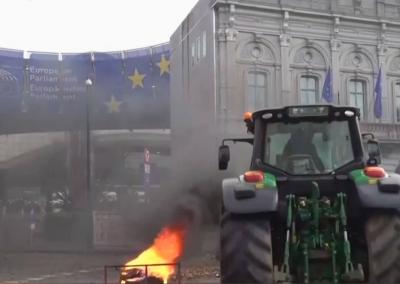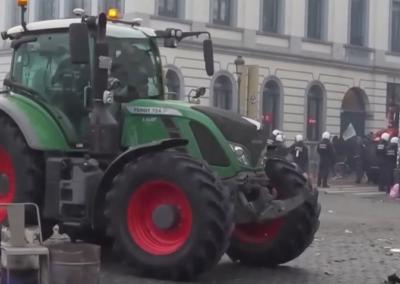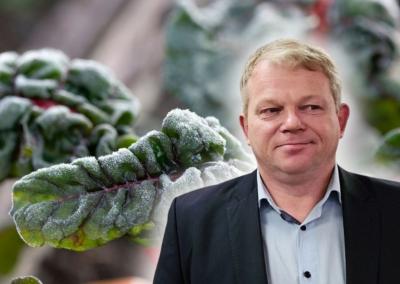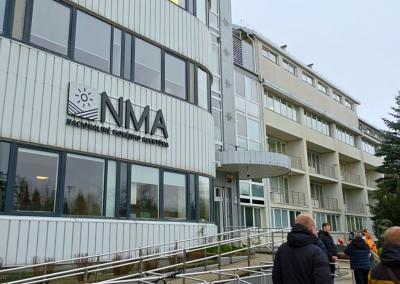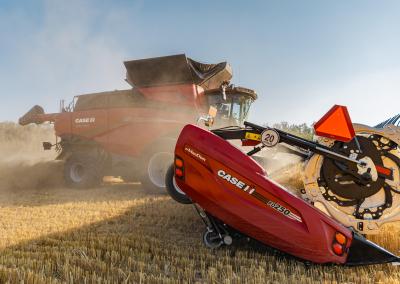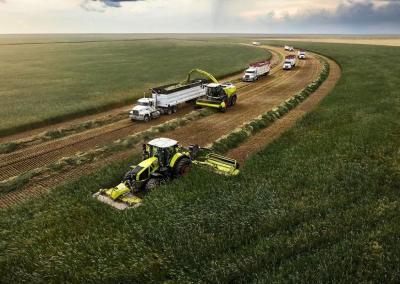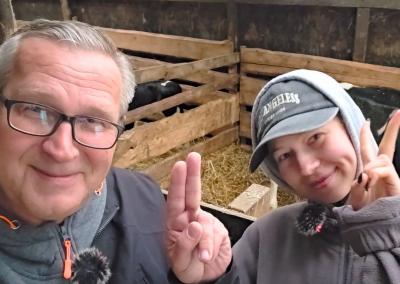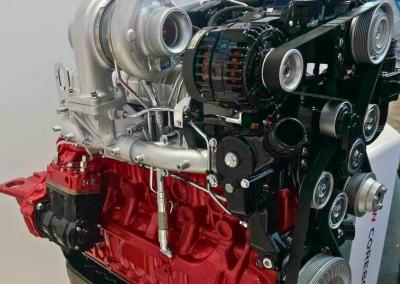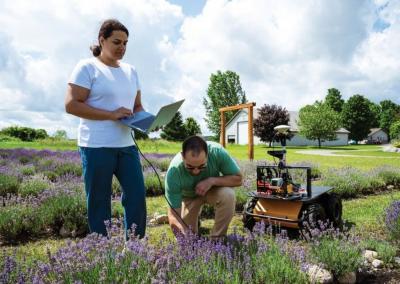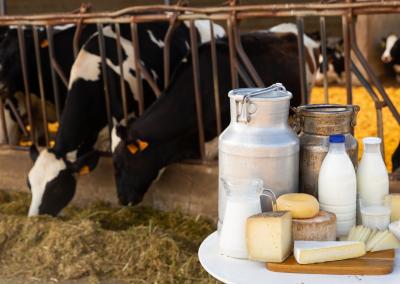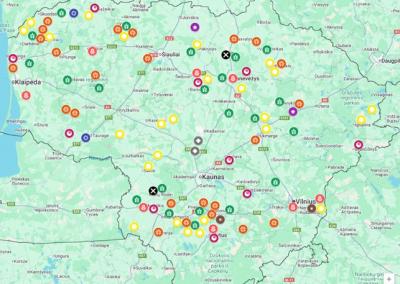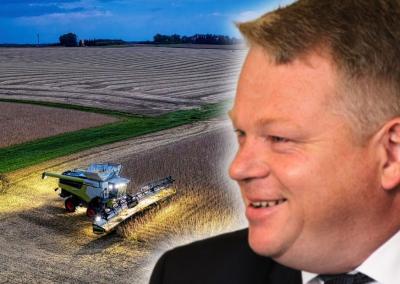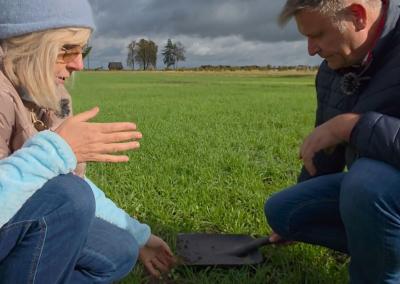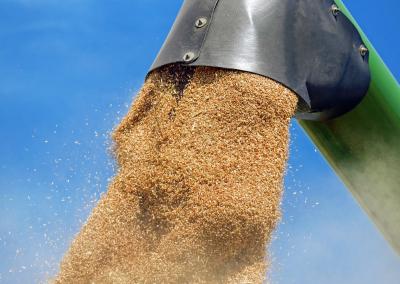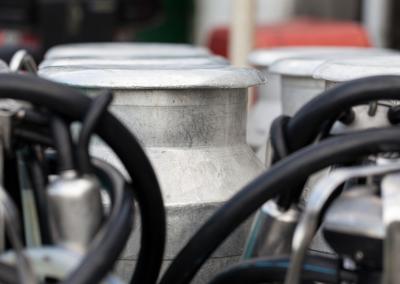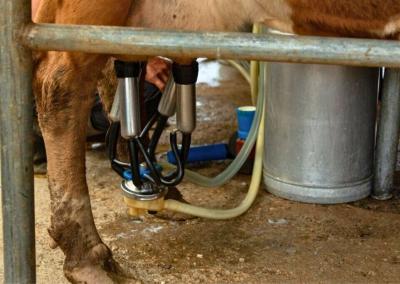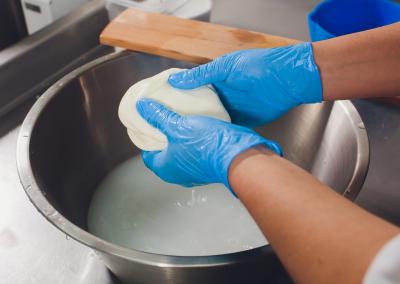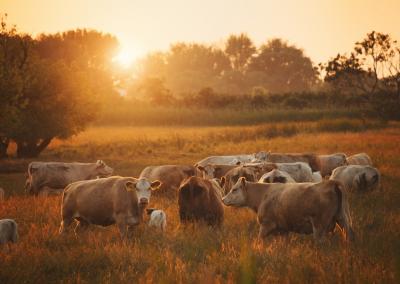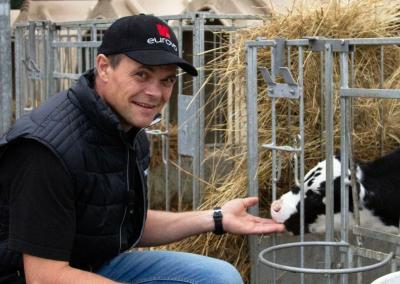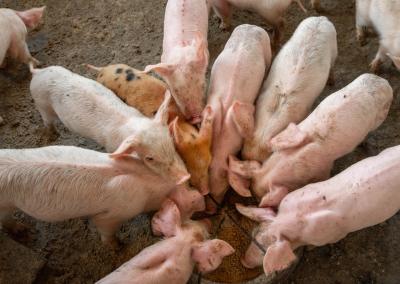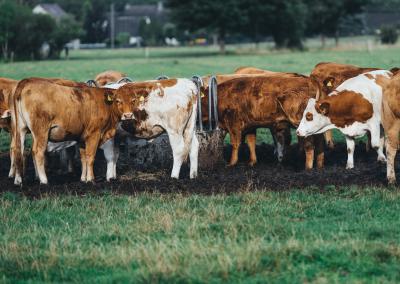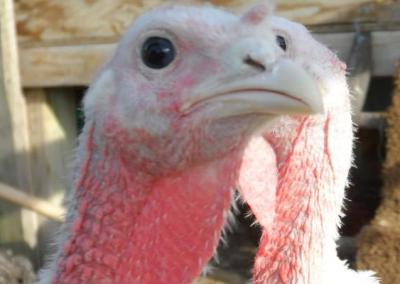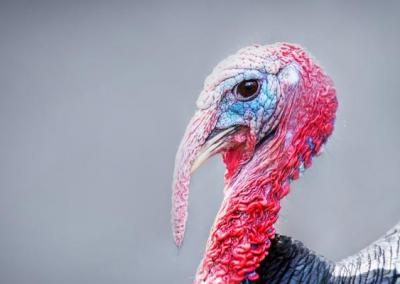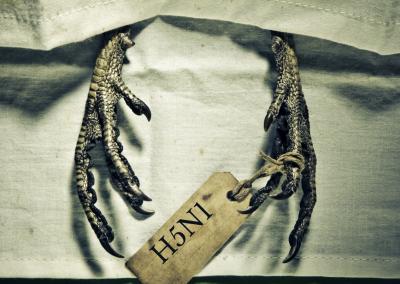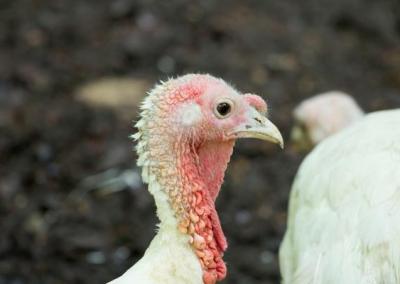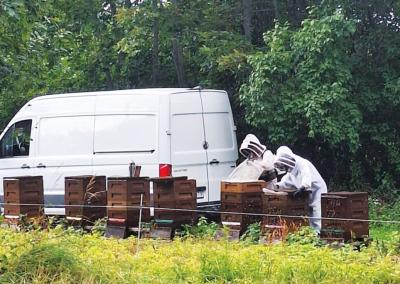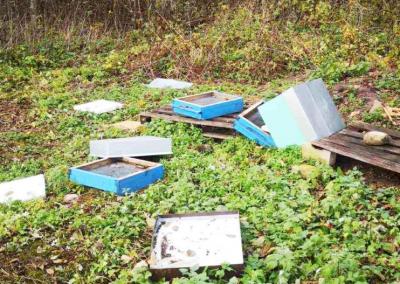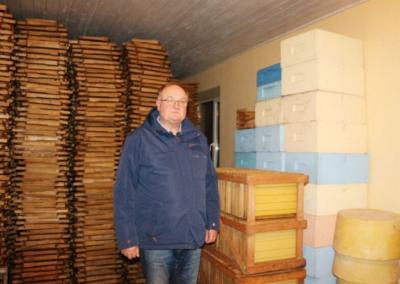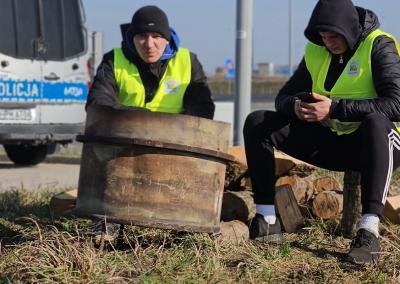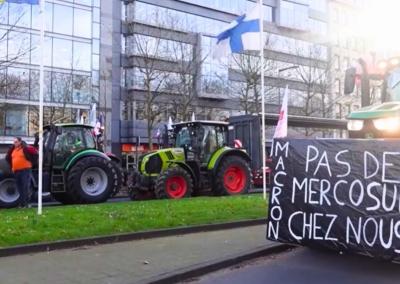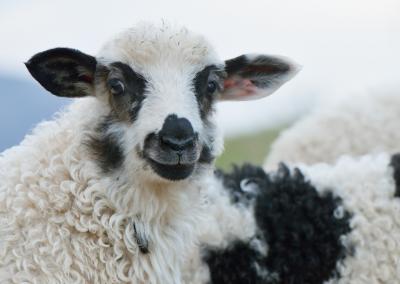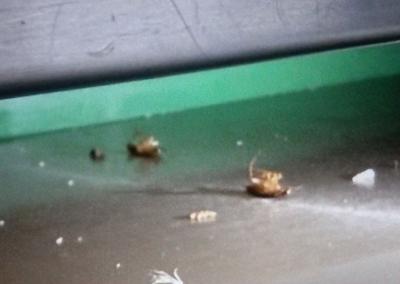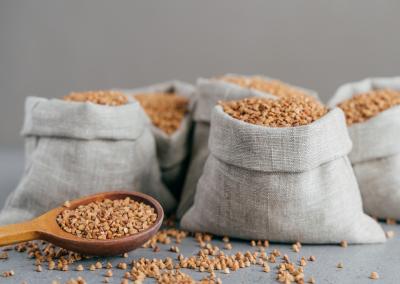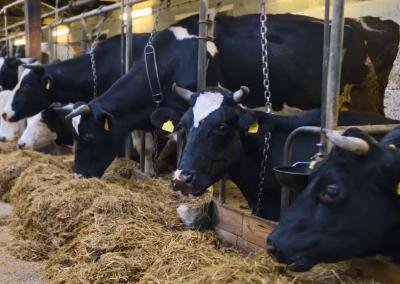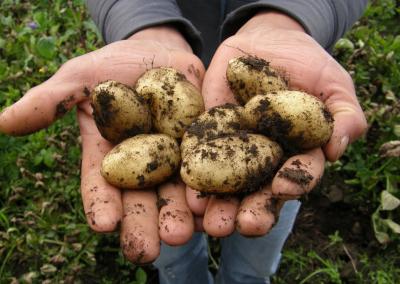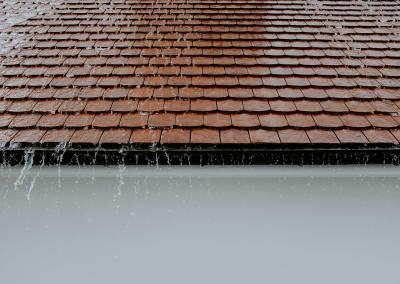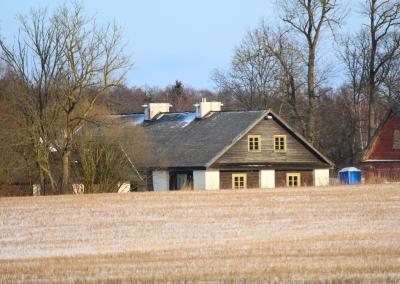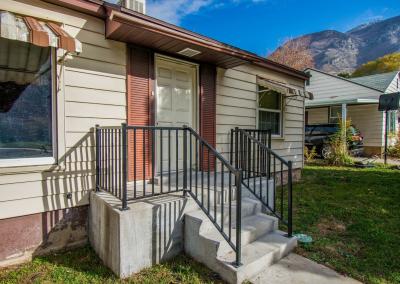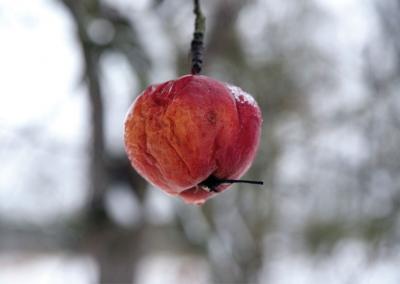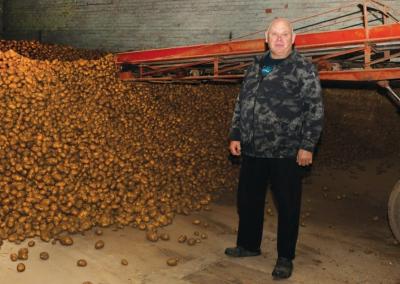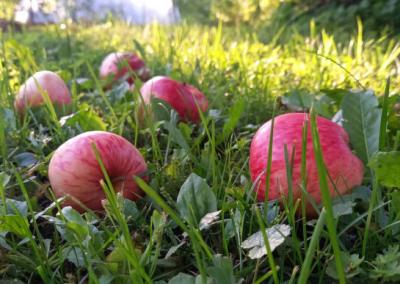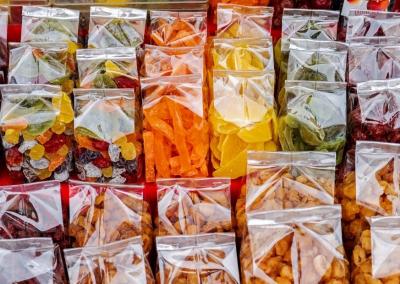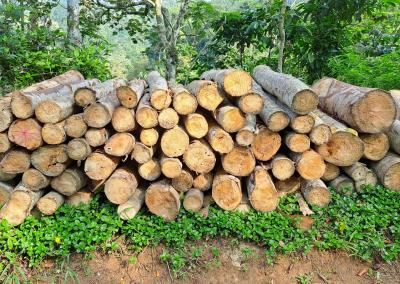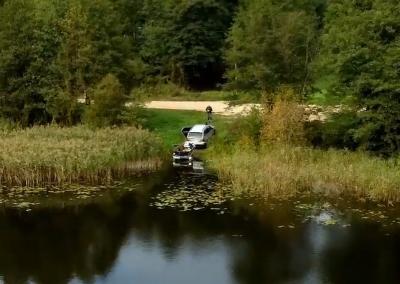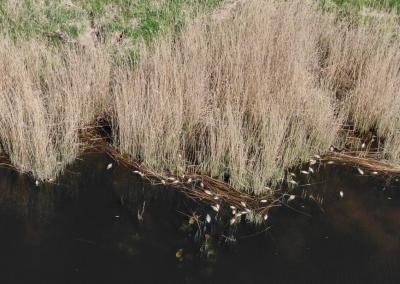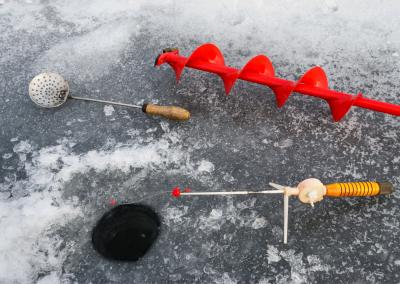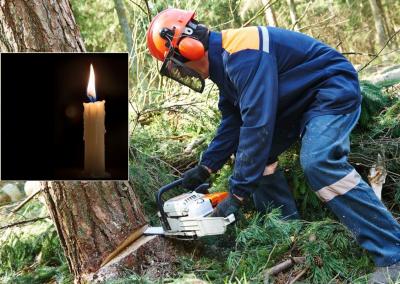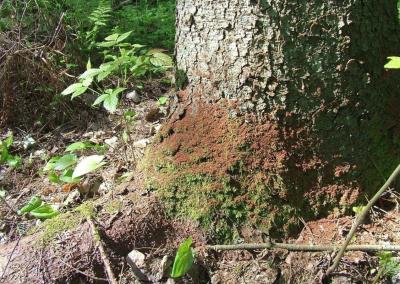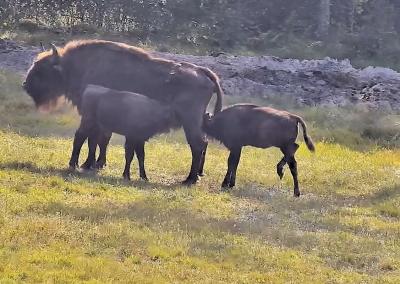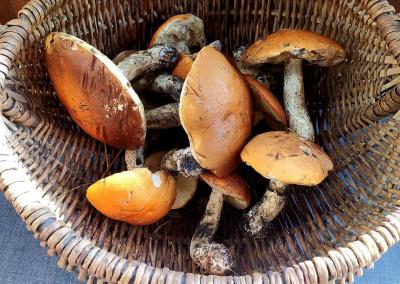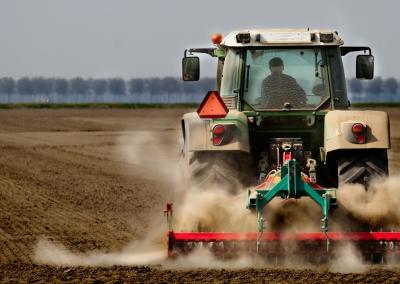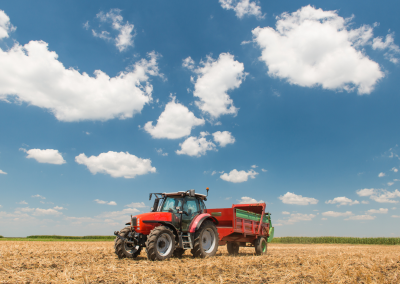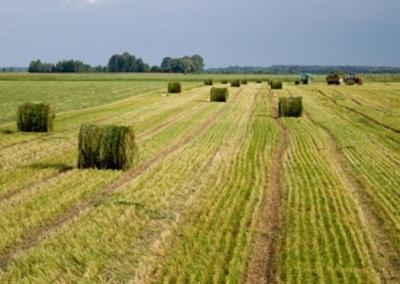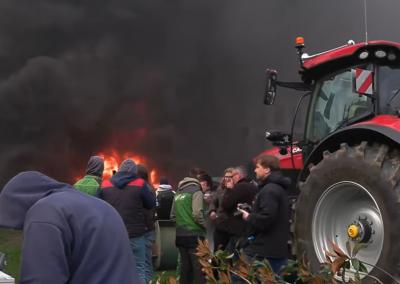Efficiency studies on direct band drills
The biggest financial risk in agriculture through crop losses is caused by adverse weather conditions, excessively high temperatures, uneven distribution of rainfall, droughts and floods. In order to keep farms competitive, alternative tillage and direct sowing methods are being explored, as well as fertiliser technologies that help to reduce the impact of adverse environmental conditions. Yields are determined not only by the lack of moisture, but also by soil productivity and quality. Soils with more organic matter retain nutrients and moisture better.
The RS-3 strip-till drill is the latest product from tillage implement manufacturer „Laumetris“ and has been put into practice in the fields of the partner farmers during the EIP project No 35BV-KK-22-1-04997-PR001. As the results depend on the soil composition and condition, experiments on the application of direct band sowing were carried out in different districts of Lithuania, with different soil composition and climatic conditions in the farmers' farmers' farmers' farms of the districts of Radviliskis, Kupiskis, Kedainiai, Pasvalys, Vilkaviskis. The aim of the experiments was to evaluate the efficiency of direct strip sowing and the effect of granular organic compost on cereal productivity.
Soil quality and preparation for sowing is one of the main factors that determine crop productivity and yield. In many years, we find that poorly prepared soils result in uneven maturity, lighter grains, more immature grains, increased drying requirements and increased risk of moulds/pathogens. The new RS-3 band drill forms the soil in two strips in different conditions, loosens only the seed strip, leaves a strip of naturally formed, naturally hard soil in between the rows, and sows stubble on top. The discs in the loosener cut through the stubble, the coulters lift the moist seedbed soil from the deeper layers and the seeds germinate at the same time and quickly, thus ensuring uniform plant development. Furrows are formed where the seedlings are protected from wind and frost over the winter and a strong crop of cereals in the spring keeps weeds at bay. In the furrow, the lower soil hardness was maintained until the end of the growing season, with higher humidity, resulting in very good root development. The addition of granulated compost to the seed furrows also reduced the hardness slightly.
The results were compared with the sowing technology and fertilisation used by the project partners, which varied. For example, in Pasvalys district, ploughing was used, which significantly reduces soil hardness, while in Vilkaviskis district, deep tillage was also used to reduce soil hardness. Elsewhere, direct drills were used, or only very shallow straw incorporation with disc cultivators was applied.
Soil moisture changes were found to vary over time in both loosened furrows and mulched inter-rows, depending on the amount and distribution of rainfall (Table 3). The unsprayed strip (inter-row) is left as an accumulator of the soil's natural properties and moisture, the unsprayed inter-rows have a low water infiltration rate, and the inter-rows are covered with a layer of straw and crop residue mulch, which reduces evaporation as moisture storage and is converted into humus. In the furrows, the loose soil is permeable to excess water, ensures good seed contact, good root development and the compost acts as a source of nutrients. The data show that the moisture content is higher in the furrow than in the furrow, and compost also increased the moisture content by 1,5-2,5 %. Its effect on the moisture regime was higher in heavy loams
.
To improve soil productivity through fertilisation, in the experiment granulated cattle manure was applied at sowing time. This slow-release fertiliser under the seed stimulated germination and improved the supply of essential nutrients such as nitrogen, phosphorus, potassium and trace elements. The addition of granular manure improved the structure of clay soils and increased the moisture content of sandy soils to a greater extent than mineral fertilisers used in conventional farming techniques.
Costs of tillage are proposed to be reduced through lower tillage intensity. Strip sowing allows tillage, sowing and fertilisation to be carried out in a single pass, reducing tractor use and environmental pollution. Working only in seed strips significantly reduces energy requirements and tillage intensity by leaving 50% of the soil undisturbed, thus reducing fuel consumption, other operating costs and labour time. Direct strip sowing can reduce engine emissions by up to 4 times less than ploughing with a plough. In addition, no-till, strip-tilling rather than full-till, and surface mulching limit greenhouse gas emissions from the soil.
Direct drilling, where the tines work the soil across the full 25 cm of the sward, requires a high tractive effort. A three metre wide drill with 9 tines and the same number of drilling rows requires a tractive effort of 35–45 kN, depending on the tillage depth, the tillage speed and the soil condition. Additional traction is required by the front-mounted discs that cut through crop residues, the APV pneumomechanical drill with automatic seed rate adjustment and coulters inserts the seeds, which are pressed by rollers, ensuring good contact with the soil. The hourly fuel consumption during sowing was 25–45 L/hr, depending on speed, filling and soil hardness. However, it was observed that the drill provides a constant load, efficient operation and combustion cycle of the internal combustion engines, lower CO₂ and particulate emissions, and a reduction of about 20% in the amount of seed required for strip drilling.The sowing is carried out at 33 cm row spacing, with wheat seed being placed in strips about 10-12 cm wide, and rapeseed being sown in a row after the change of the discharge coulter. Yield increases of up to 10 % have been observed in some variants, as well as improvements in the quality of the production and the grain's specific weight. It is believed that, had it not been for the heat at the end of June this year, when the crops were simply scorched and harvested extremely early, without additional measures, the yield of the crops could have been increased by more thanks to the use of the direct strip drilling. There is a shortage of time for sowing oilseed rape after the wheat harvest, and the summer drought leads to a lack of soil moisture, which causes seeds to germinate late or not at all. As the climate changes, it is now important to take into account not only the timing of sowing, but also the condition of the soil and the spreading of straw. It has been observed that the band drill is effective in clearing wheat stubble from the drill rows and in ensuring the quality of the rape seedbed.This year's yield results of the band drill were not too exceptional compared to the continuous conventional drill, with variations within the margin of error, depending on the location of the test (soil), and were adversely affected by the prolonged drought and the heat at the end of June, at the cereal grain filling phase, eliminating the larger possible differences. It can be assumed from the studies that strip sowing and the application of organic matter over a number of years would lead to favourable changes in soil properties compared to intensive tillage with frequent tillage or ploughing.
In summary, direct strip sowing allows stubble sowing with clean sowing rows, which is particularly important for oilseed rape, and the incorporation of threshing residues and stubble into the row spacings. Sowing in furrows ensures that the seedlings are protected from wind and frost, especially in snowless winter conditions. The furrow provides greater moisture throughout the growing season. Sowing in cultivated strips of soil eradicates weeds, prepares the seedbed, warms up the soil more quickly, ensures more uniform germination of the seeds and provides an optimal moisture regime. Strip sowing in furrows maintains soil moisture better, eliminating the drying out of the soil that is typical of traditional sowing methods using ploughing and cultivation. The plants germinate at the same time and develop and mature evenly, with fewer small grains, weeds are suppressed by a strong crop, and row spacing improves the ventilation of the crop, reducing the need for herbicides and fungicides.

